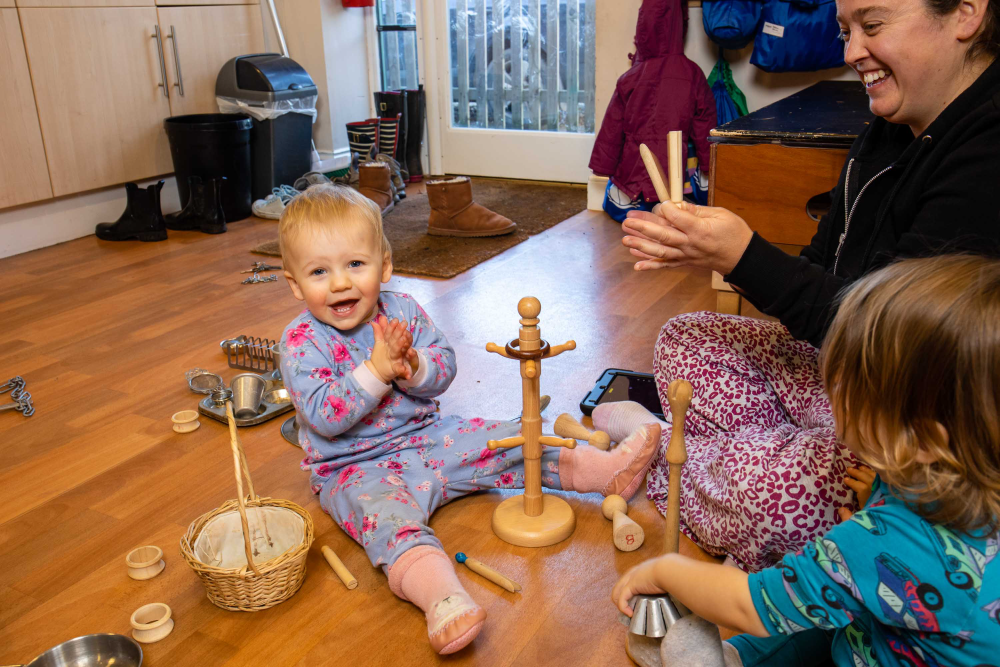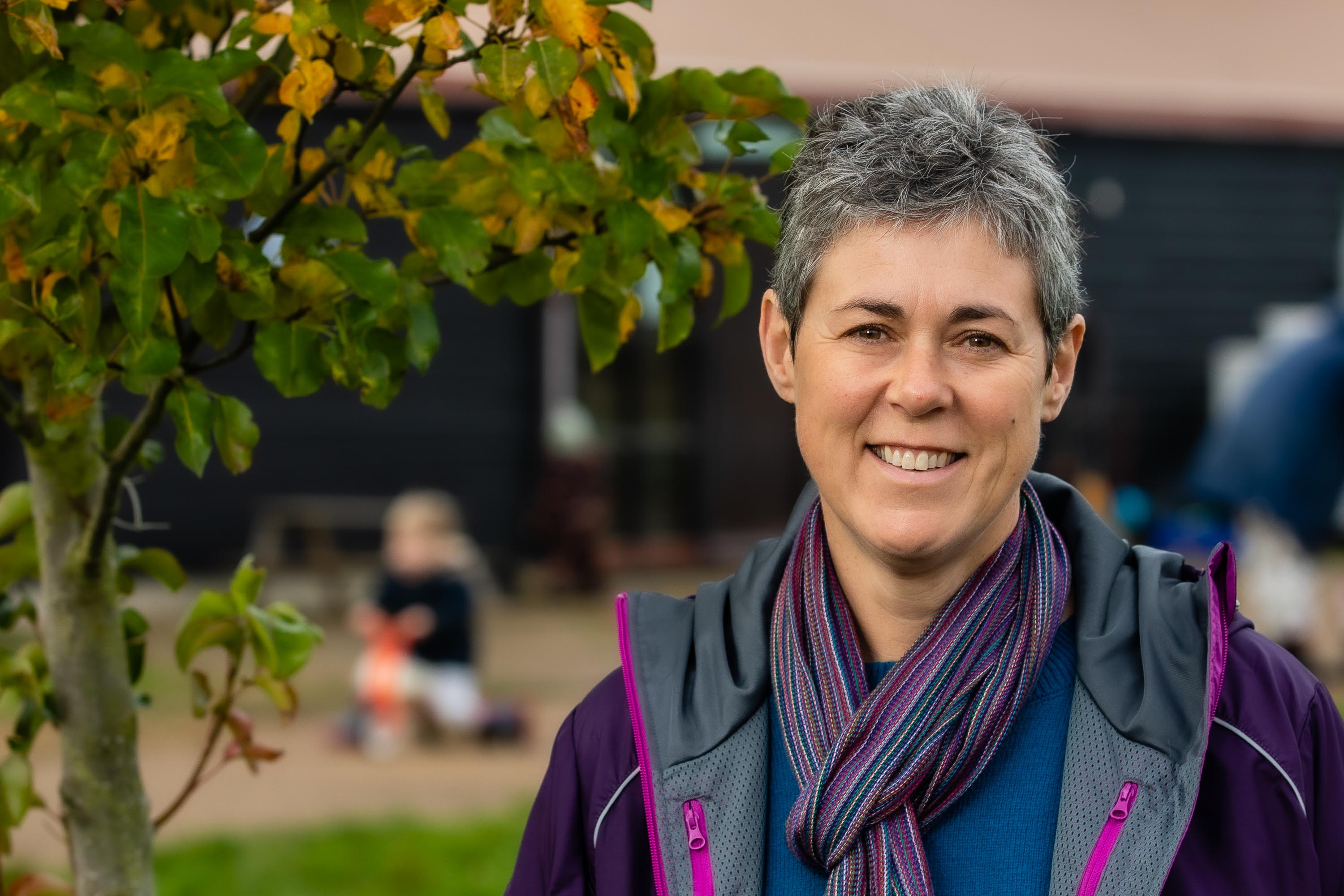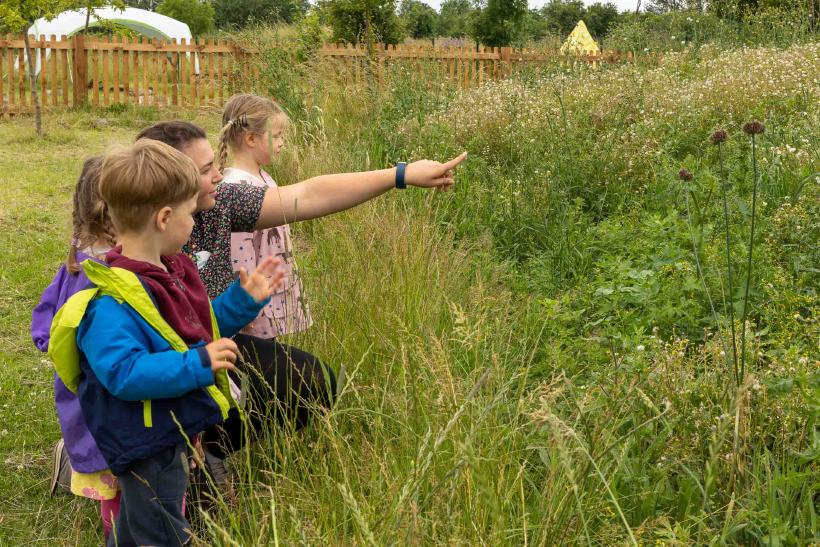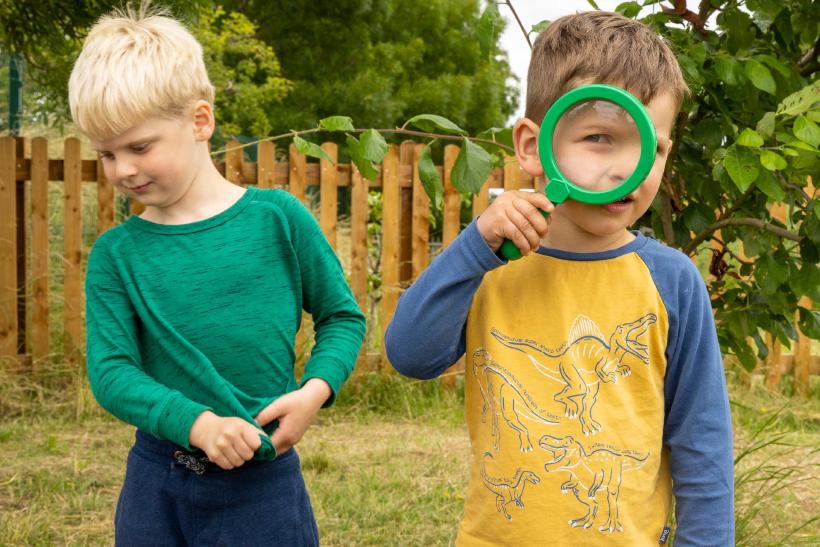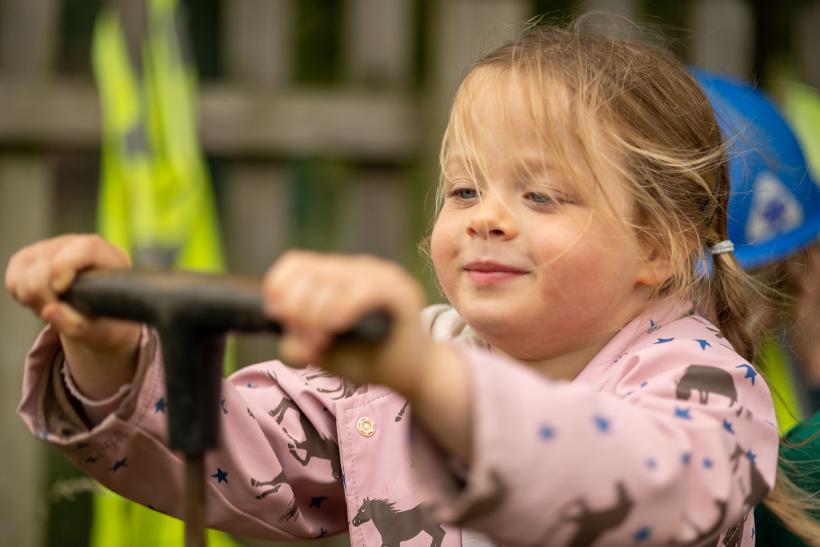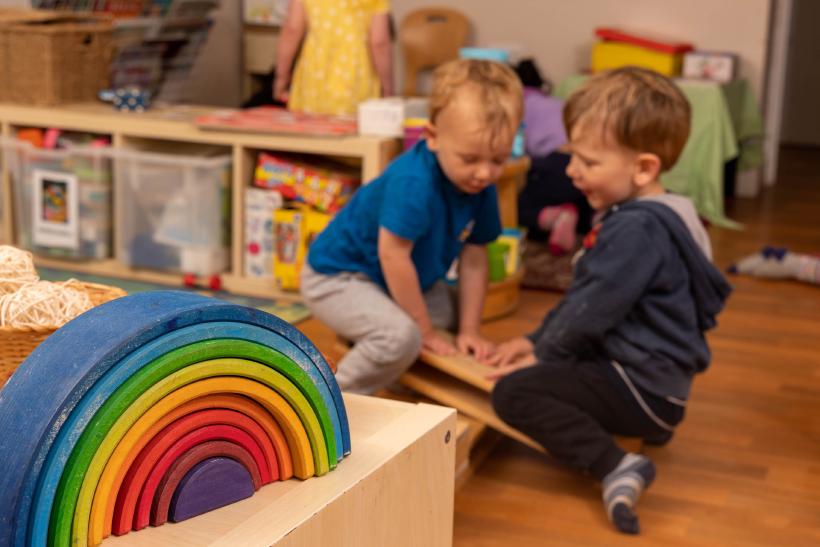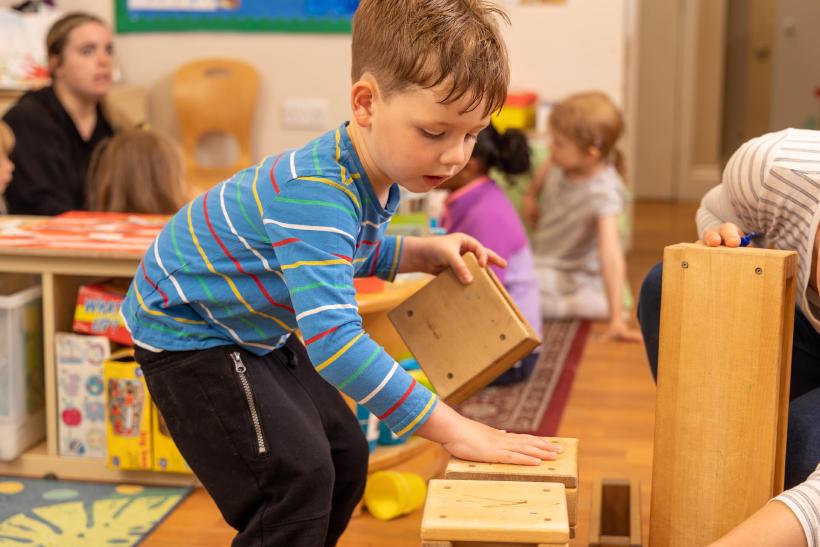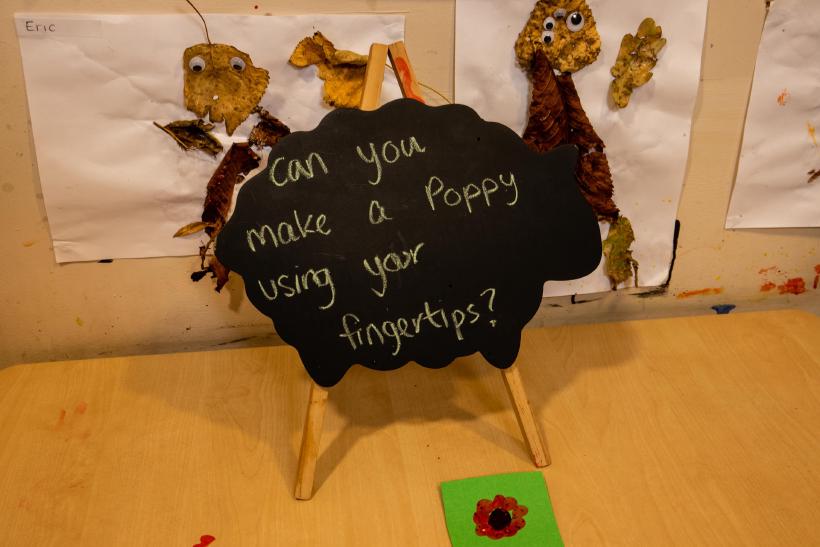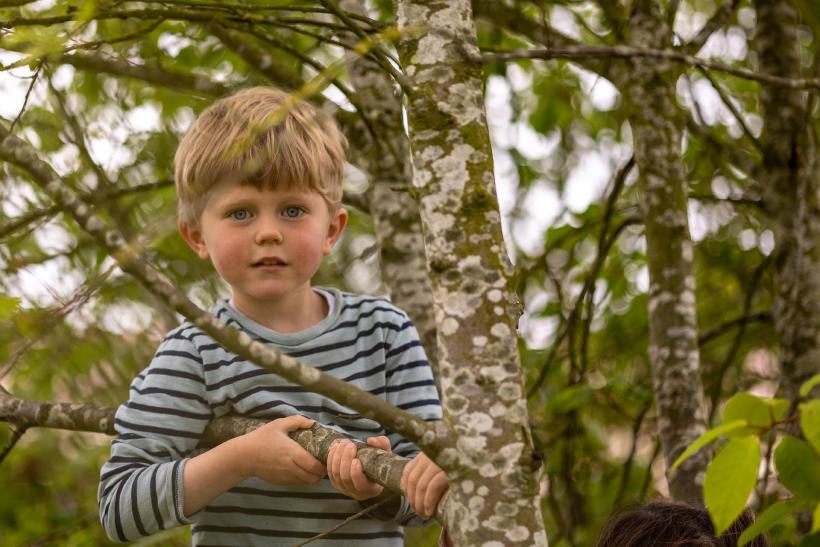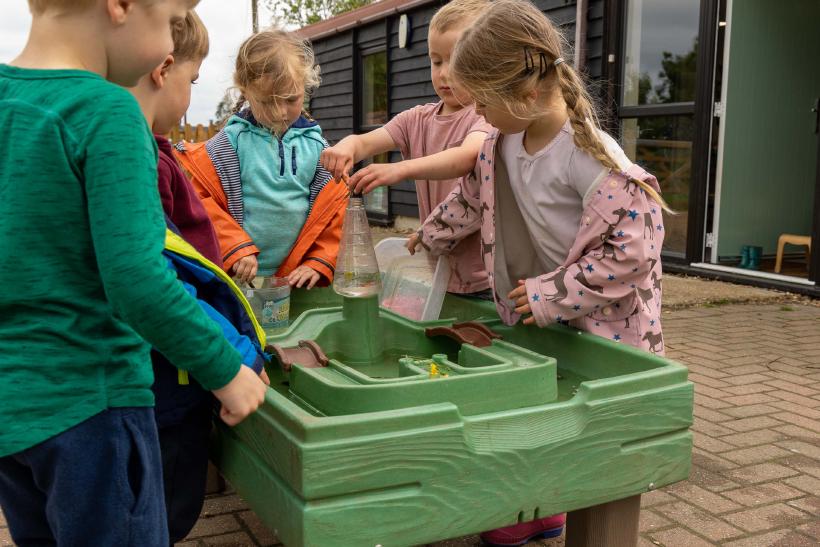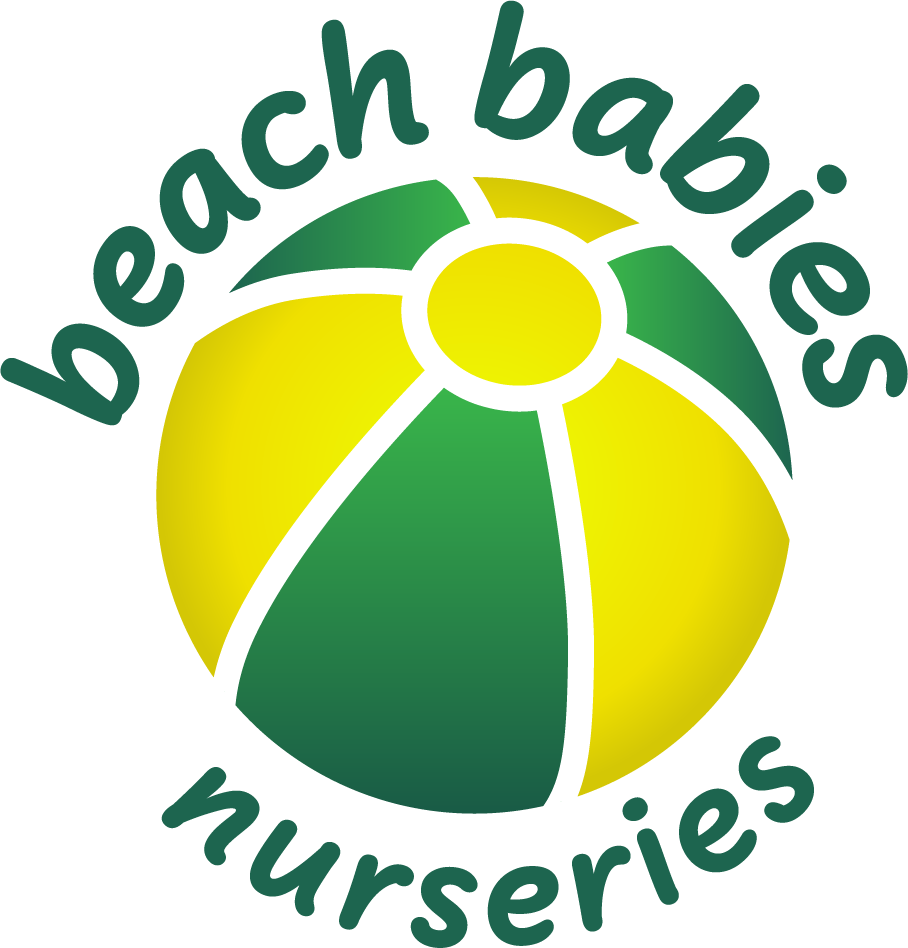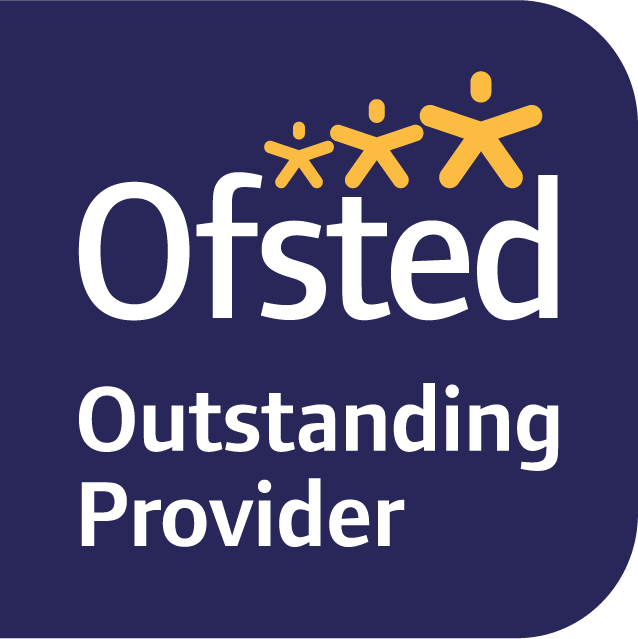Treasure baskets
Suitable for children aged from about 6 months until they are capable crawlers
The theory
These childrens brains are growing and forming neural pathways at an enormous rate. Every child has five senses; sight, hearing, touch, taste and smell, objects that they play with should appeal to these different senses. The more all the senses are engaged and stimulated the greater the neural development.
Babies learn from the treasure basket by looking, sucking, touching, licking, banging, picking up and dropping, shaking, by moving things from hand to mouth and looking carefully at objects. Many commercial toys for young children look exciting and colourful and are classed as educational, but many are very limiting in the experiences a baby can get from them. Plastic toys may be durable but they often taste, smell and feel the same.
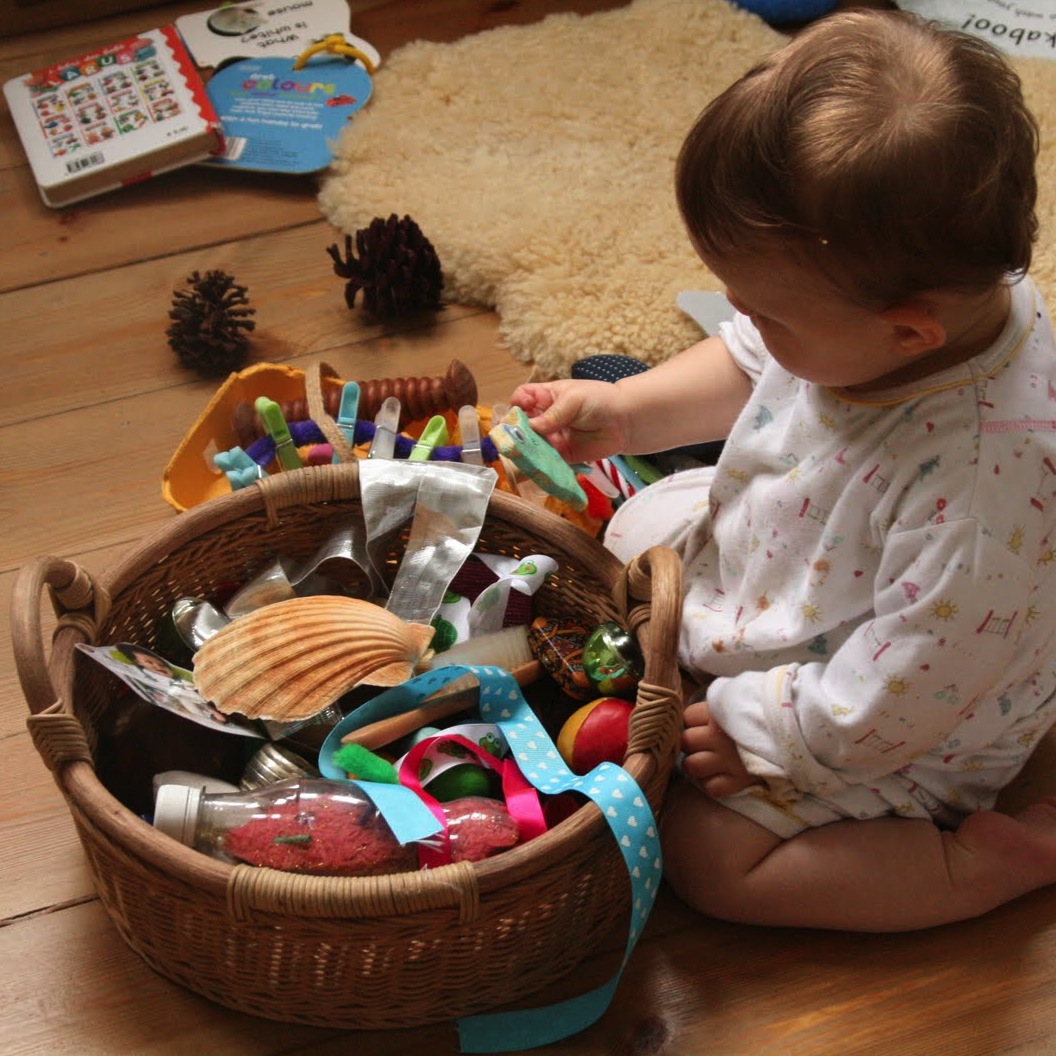
The theorist
Educational psychologist Elinor Goldschmied developed the idea of babies and toddlers learning through their own investigations of natural and household objects more than 30 years ago.
What is it?
A collection of everyday objects chosen to appeal to many senses in different ways. Ideally this is presented in a sturdy low sided wicker basket, so the things are accessible but it won’t tip over if the baby leans on it.
All the objects should be safe since the baby will put them all in their mouth, be particularly careful there are no sharp edges nor things small enough to swallow. Watch your baby when they are playing with the basket and discard any objects as needed (e.g. cardboard rolls as they are softened with mouthing). Wash objects that have been mouthed after each playtime.
Ideas for what can go in a Treasure basket
• Natural objects – fir cones, large pebbles, natural sponge, shells, large feathers, a lemon, an apple, pumice stone, Loofah
• Objects of natural materials – shaving brush (test bristles are firmly in place), wooden nail brush, small wooden cosmetic mirror, bamboo toothbrush, little baskets, raffia mats, bone shoe horn, rubber doorstop
• Wooden objects – curtain rings, clothes pegs, spoons, spatulas, small boxes, castanets, egg cups, small bowls, coloured beads on a string, lemon juicer
• Metal objects – spoons (various sizes), small whisk, small tins, bunch of keys, garlic press, lemon squeezer, tea strainer, short lengths of chains
• Objects, in leather, textile, rubber, fur – leather purse, tennis ball, bean bag, leather glasses case, coloured marble eggs, velvet power puff, small cloth bags containing lavender, rosemary, thyme, cd’s, pom-poms, coloured ribbons, pieces of fabric of differing textures (e.g. fur, wool, cord)
• Paper, cardboard – little notebook, greaseproof paper, space blanket, small cardboard boxes, insides of kitchen rolls or wrapping paper, sandpaper
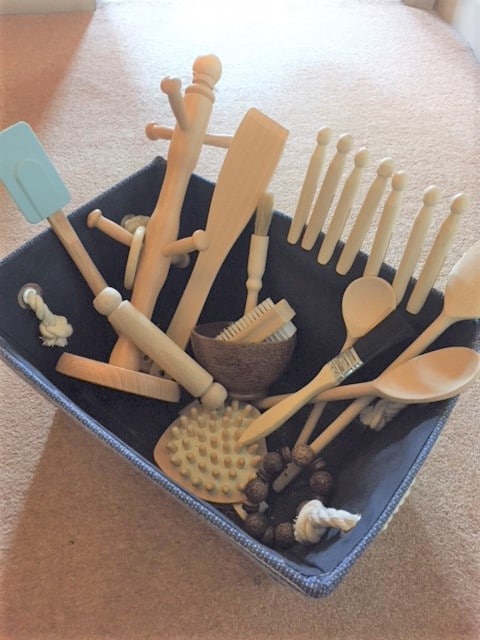
Playing with it
Your role is alongside not leading the baby who will inspect and discard many objects before focusing on one for a period of time. Be attentive and present, reassure your baby and respond with smiles and gestures as your baby explores but only intervene when the baby needs it. This is playtime led by the baby, your role is as attentive adult. They will often pass you objects and then take them back, think of this as a type of conversation with each of you taking turns.
This type of play not only helps to stimulate and develop your baby’s brain it can also help their ability to focus and concentrate, to develop their fine motor skills, to increase their confidence and ability to make choices.
Best of all, you have objects you can use at home, you don’t need to buy things. Walk round and get a collection of up to 50 suitable objects and get playing and learning.
Discover more here Froebel Trust | Elinor Goldschmied & treasure baskets
